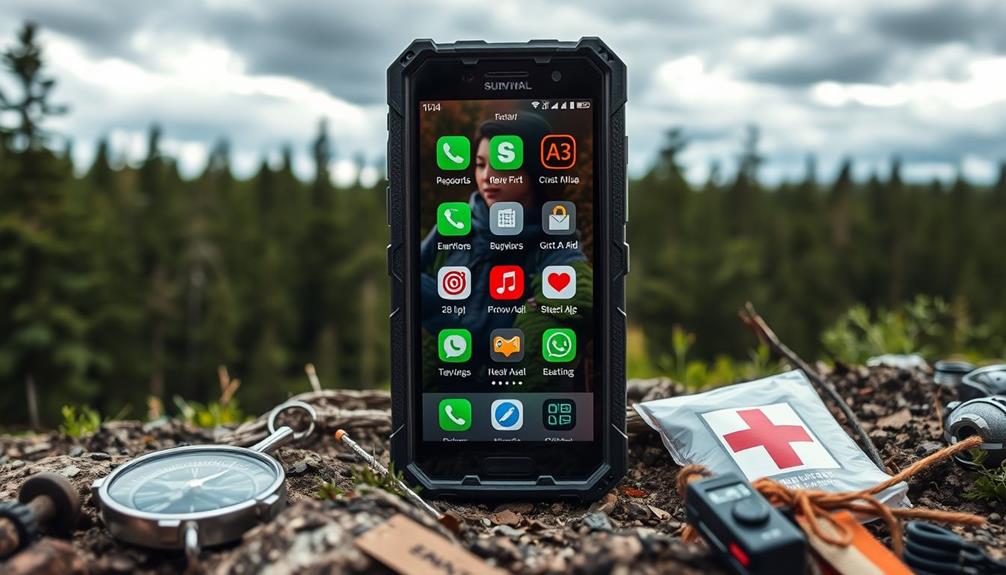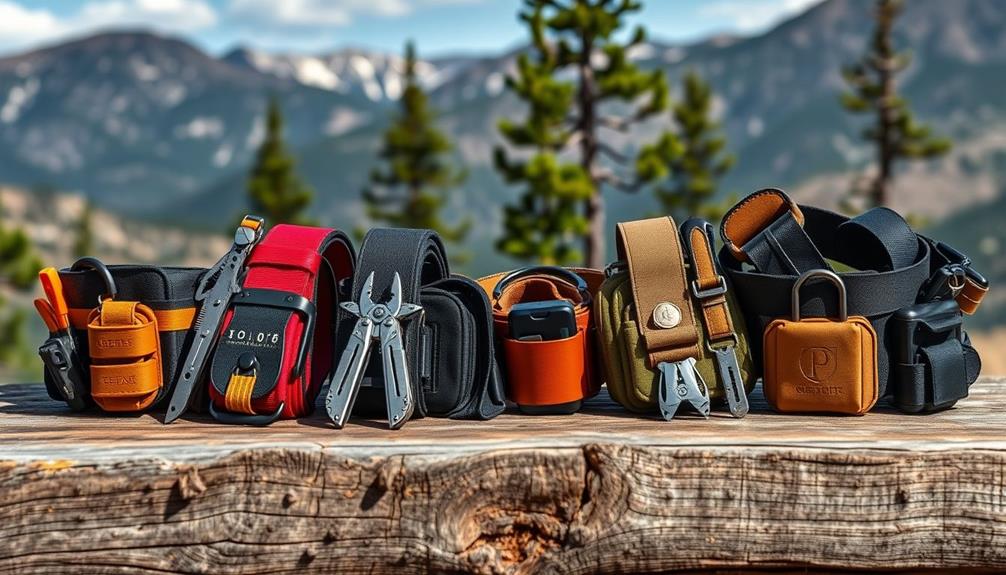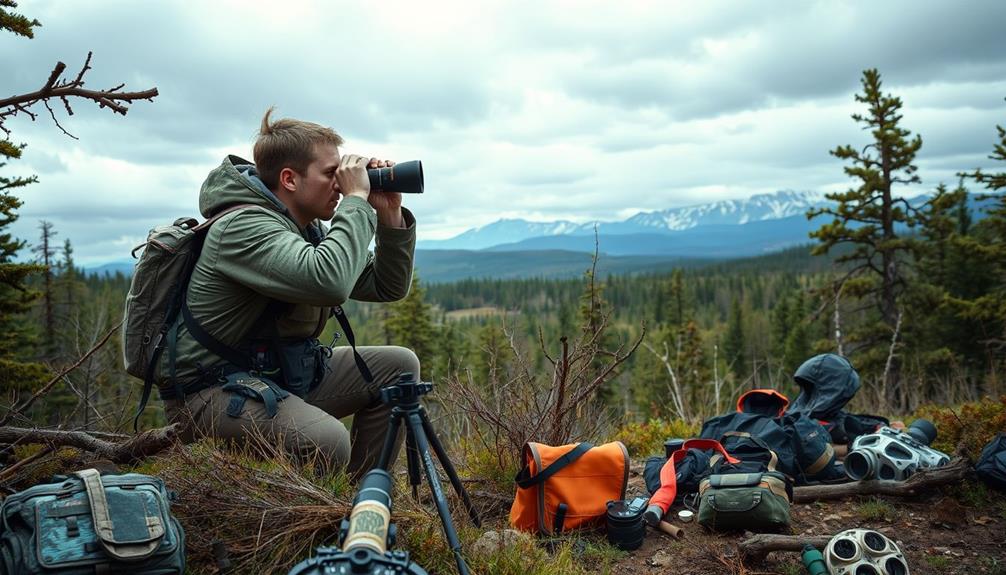The ultimate survival backpack showdown reveals the best options for your emergency and adventure needs. These packs act as lifelines, helping you stay organized and prepared. Key features to contemplate include durability, lightweight design, and adequate capacity without bulk. Choices like the 5.11 Rush 72 and Teton Scout 55 offer robust support and multiple compartments. Effective packing techniques guarantee you can access your gear quickly and efficiently. With budget-friendly options available, it's easier than ever to invest in quality. Discovering what works best for you can enhance your experience, and there's much more to explore in this essential gear journey.
Key Takeaways
- Compare top survival backpacks like the 5.11 Rush 72 and Teton Scout 55 based on capacity and features.
- Evaluate durability, material quality, and comfort for long-term use in diverse conditions.
- Assess packing techniques to maximize organization and weight distribution for effective mobility.
- Consider budget-friendly options that still provide solid performance without compromising quality.
- Engage with survival communities for insights on the latest gear and best practices in survival preparedness.
Importance of Survival Backpacks

A well-equipped survival backpack can be your lifeline in emergencies or outdoor adventures.
It's essential for staying prepared, allowing you to organize and access your gear quickly when time is critical.
With a good backpack, you enhance your mobility and comfort, making long treks more manageable.
Plus, it protects your equipment from the elements, ensuring everything remains functional when you need it most.
Effective packing plays an important role in this; when you know exactly where everything is, you can act swiftly without fumbling around.
Reliability and solid construction are imperative, as a durable backpack will withstand the rigors of the outdoors.
Investing in a quality survival backpack can greatly impact your preparedness and overall experience in challenging situations.
Essential Features to Consider

When choosing a survival backpack, considering essential features can make all the difference in your preparedness and comfort.
First, assess the capacity; you need enough space for your gear without being overly bulky. Durability is vital, so look for materials like 1050D Nylon or 600D Polyester to withstand harsh conditions.
Weight matters too; opt for lightweight options to avoid fatigue during prolonged use. Organization is key—multiple compartments can streamline access to your gear.
Finally, prioritize comfort by selecting backpacks with padded straps and back support, especially for extended wear.
Top Survival Backpack Choices

Choosing the right survival backpack can greatly impact your preparedness, especially when you're faced with outdoor challenges. Here are some top choices that cater to various needs:
| Backpack Name | Capacity | Key Feature |
|---|---|---|
| 5.11 Rush 72 2.0 | 55L | Robust construction |
| Teton Scout 55 | 55L | Budget-friendly with good support |
| Eberlestock Gunslinger II | Varies | Equipped with rifle scabbard |
| Tactical Packs | Varies | Military-grade durability |
| Hydration Packs | Varies | Integrated water reservoirs |
Each option offers unique features to enhance your outdoor experience. Prioritize your specific needs, whether you require durability, capacity, or hydration solutions, and make an informed choice that fits your adventure plans.
Effective Packing Techniques

Packing your survival backpack effectively can make all the difference in an emergency. Start by prioritizing your essentials and organizing them for ideal weight distribution.
Place heavier items close to your back for better balance, as this helps reduce strain during hikes. Use compartments to separate gear logically; it'll save you time fumbling around when you need something quickly.
Roll clothing to save space and keep it dry, while keeping tools and first aid kits easily accessible. Consider the specific scenarios you'll face, adapting your packing strategy accordingly.
Don't forget to regularly update your gear and practice packing your backpack, so you're familiar with its layout and can grab what you need without hesitation.
Budgeting for Survival Gear

Budgeting for survival gear is essential to guarantee you're prepared without breaking the bank. Start by determining your specific needs and prioritize your gear accordingly.
You don't have to splurge on high-end options; many budget-friendly backpacks can offer solid performance. Look for sales or discounts to stretch your budget further.
Consider investing in a few quality items instead of filling your pack with cheaper, less durable gear. Remember, it's about value, not just price.
Engage with survivalist communities for advice on what gear is truly essential. By carefully planning your purchases, you can build a reliable survival kit that meets your needs while staying within your financial limits.
Maintenance and Gear Updates

When it comes to maintaining your survival backpack, staying proactive is key. Regularly inspect your backpack for wear and tear, like frayed straps or broken zippers.
Keep it clean by wiping down the exterior and clearing out debris from compartments. Update your gear seasonally; swap out food, medical supplies, and batteries to guarantee everything's fresh and functional.
Test your equipment periodically to confirm it's in working order. Don't forget to adjust your packing strategy based on your changing needs or new skills you've acquired.
If you add new items, make certain they fit properly and maintain weight balance. A well-maintained backpack supports your preparedness and guarantees you're ready for any situation that may arise.
Engaging With Survival Communities

How can connecting with survival communities enhance your preparedness journey? Engaging with like-minded individuals provides invaluable knowledge and experience.
You can share tips, strategies, and gear recommendations that you mightn't find elsewhere. These communities often host workshops and training sessions, giving you hands-on learning opportunities.
Plus, you'll stay updated on the latest survival trends and techniques. Networking can also lead to potential partnerships for group outings, enhancing your skills in real-world scenarios.
By participating in discussions, you'll gain insights into effective packing methods and gear maintenance.
Ultimately, being part of a survival community not only enriches your knowledge but also boosts your confidence as you prepare for any situation life throws your way.
Frequently Asked Questions
What Types of Emergencies Should I Prepare for With a Survival Backpack?
You should prepare for natural disasters like hurricanes, floods, and wildfires, as well as personal emergencies such as medical incidents or getting lost outdoors. Having a survival backpack ready can greatly enhance your safety and readiness.
How Can I Customize My Survival Backpack for Specific Outdoor Activities?
You think a one-size-fits-all backpack works, right? Customize your survival backpack by adding gear tailored for specific activities, like fishing or hiking. Organize essentials based on your adventure, ensuring you're prepared for anything unexpected.
Are There Survival Backpacks Designed Specifically for Children or Families?
Yes, there are survival backpacks designed specifically for children and families. These packs prioritize comfort, lighter weight, and appropriate sizing, ensuring young adventurers can carry essentials while staying safe and engaged during outdoor activities.
What Is the Average Lifespan of a Survival Backpack?
The average lifespan of a survival backpack varies but typically ranges from 5 to 10 years. With proper care and maintenance, you can extend its durability, ensuring it's ready for emergencies when you need it.
Can I Store Food and Water in My Survival Backpack?
Yes, you can store food and water in your survival backpack. Pack non-perishables and a hydration system for convenience. Make certain everything's sealed tightly to prevent spoilage and leaks during your adventures or emergencies.
Conclusion
In your quest for the ultimate survival backpack, remember that choosing the right one can feel like finding a needle in a haystack. With the essential features in mind, you'll be well-equipped to tackle any adventure or emergency that comes your way. By focusing on effective packing and keeping your gear updated, you'll transform your backpack into a fortress of preparedness. So gear up, stay informed, and step confidently into your next journey—your ideal survival companion is just a choice away! Beyond the traditional gear, consider multi-functional items that can enhance your overall preparedness. For example, understanding the ultimate uses of a shemagh—from sun protection and warmth to an emergency tourniquet or water filter—can maximize your adaptability in unpredictable situations. Every item in your pack should serve multiple purposes, ensuring you remain versatile and ready for anything nature throws your way.










